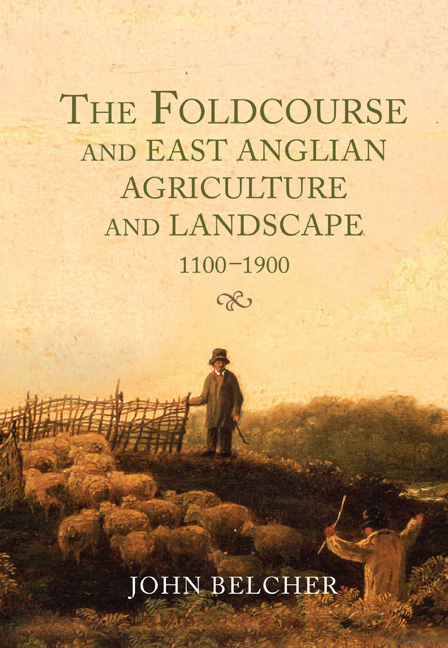Book contents
- Frontmatter
- Contents
- List of Illustrations
- Acknowledgements
- List of Abbreviations
- Introduction
- Chapter 1 The Contexts of the Foldcourse
- Chapter 2 Manors, Rights and Customs of the Foldcourse
- Chapter 3 The Medieval Foldcourse
- Chapter 4 The Late Medieval Evolution of Foldcourse Husbandry
- Chapter 5 The Agricultural Practice of Foldcourse Husbandry
- Chapter 6 The Foldcourse and Improvement
- Conclusions
- Glossary
- Bibliography
- Index
- Garden and Landscape History
Chapter 5 - The Agricultural Practice of Foldcourse Husbandry
Published online by Cambridge University Press: 26 March 2021
- Frontmatter
- Contents
- List of Illustrations
- Acknowledgements
- List of Abbreviations
- Introduction
- Chapter 1 The Contexts of the Foldcourse
- Chapter 2 Manors, Rights and Customs of the Foldcourse
- Chapter 3 The Medieval Foldcourse
- Chapter 4 The Late Medieval Evolution of Foldcourse Husbandry
- Chapter 5 The Agricultural Practice of Foldcourse Husbandry
- Chapter 6 The Foldcourse and Improvement
- Conclusions
- Glossary
- Bibliography
- Index
- Garden and Landscape History
Summary
It is impossible to understand the foldcourse without understanding the agrarian regime of which it was a significant component. The interaction and intimate relationship between the arable and pastoral elements of foldcourse husbandry are not usually fully discussed nor understood, in particular the role of infield–outfield agriculture, which I will argue was more common in the light-soil regions of East Anglia than is usually credited and has not previously been explored in detail.
During the Middle Ages some parts of East Anglia saw the development of flexible and more intensive systems of agriculture based on the utilisation of both arable and pastoral resources in a “complementary rather than competitive” fashion. The light-soil regions, which included those most associated with the foldcourse, played host to two related mixed farming systems: convertible husbandry, a periodic alternation between arable and grass leys, and infield–outfield, a mix of intensively and extensively cropped arable. There was in practice a significant overlap between the two regimes and both labels might apply, for both leys and outfields were an easily available source of fertile soils that formed “the principal reserve of stored nitrogen”. The following can be viewed as examples of both infield–outfield and convertible husbandry. At Felbrigg the individual lands were sown for several years and then left fallow, as “temporary lays”, for the same period. At Snailwell (Cambridgeshire) in 1566 there were 100 acres of ley land in a number of fields that have been described as a response to soil exhaustion. At neighbouring Chippenham in the thirteenth century, and again in 1544, there were references to ‘la leys’ and ‘le leye’ in the fields close to the heath and lands that had been arable in the twelfth century were, by 1544, heath.
Convertible husbandry was described by Harry Kitsikopoulos as “less productive” when compared with “regular” common fields prior to 1349, though somewhat better after the Black Death, with the easing of demographic pressures on the need for arable land. These conclusions were drawn from a cost, revenue and profit model of two hypothetical farms. To what extent a fair comparison is being made is questionable: as Kitsikopoulos commented, the difference was largely due to the fact that a majority of the manors following a convertible or “irregular and flexible field system” were located on light soils.
- Type
- Chapter
- Information
- Publisher: Boydell & BrewerPrint publication year: 2020



